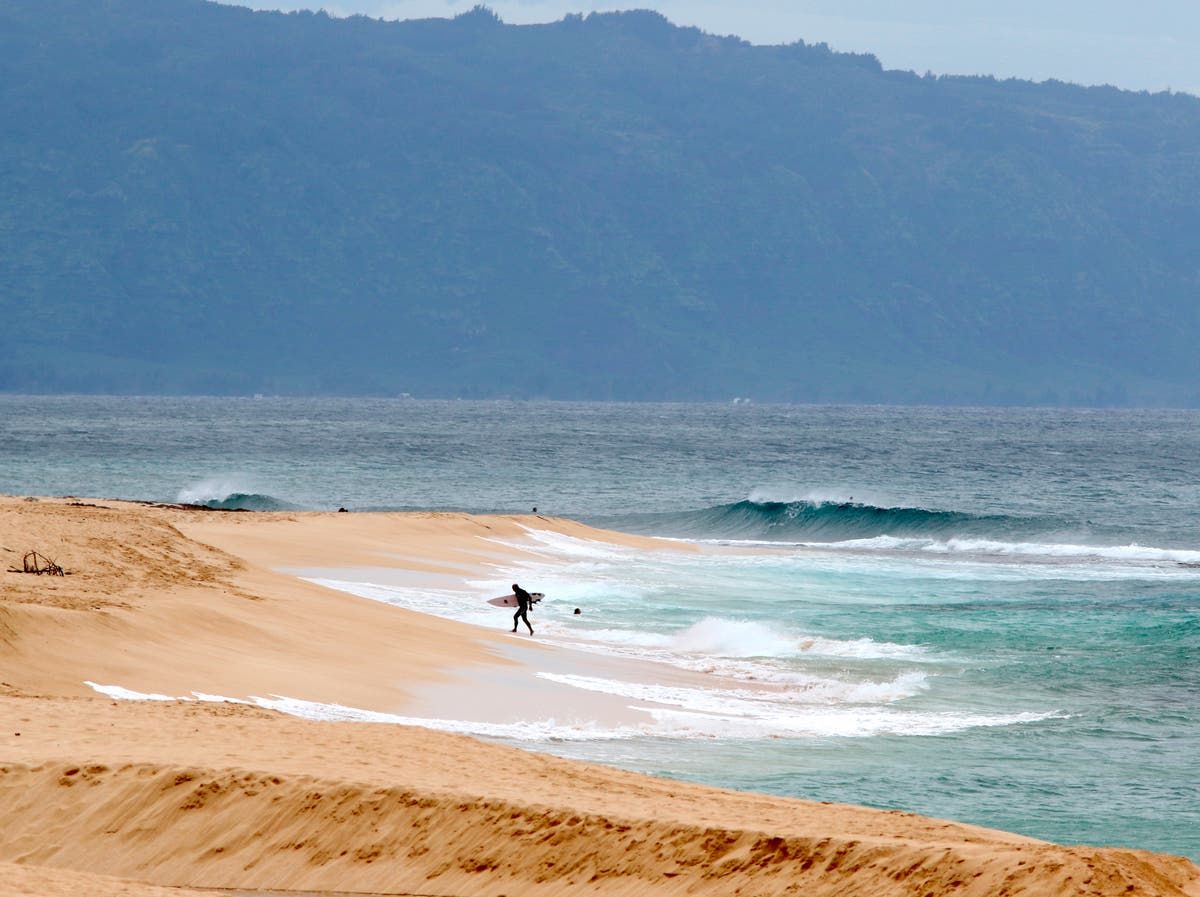Types of Shark Attacks in Hawaii: Shark Attack Hawaii

Shark attack hawaii – Hawaii, known for its pristine beaches and diverse marine life, is also home to a variety of shark species. While shark attacks are rare, they do occur, and understanding the types of attacks and the factors that contribute to them is crucial for ensuring safety in the water.
In the realm of aquatic perils, the specter of shark attacks off the shores of Hawaii looms large. Yet, amidst the dread it inspires, one cannot overlook the tragic toll of drownings in Panama City Beach. Drownings there have claimed countless lives, leaving families shattered and communities scarred.
As the ocean’s currents ebb and flow, so too do the dangers it holds, reminding us of the fragility of human life in the face of nature’s unforgiving embrace.
Frequency and Types of Shark Attacks in Hawaii
According to data from the Hawaii Department of Land and Natural Resources, there have been 204 documented shark attacks in Hawaii since 1828, with an average of one attack every two years. Of these attacks, 18 were fatal.
The bloody waters off Hawaii, where a shark attack left a swimmer critically injured, echo the horrors that unfolded in Panama City Beach not long ago. The relentless predator’s deadly instincts, once unleashed, remind us of the primal fear that lurks beneath the tranquil surface of our oceans.
The most common type of shark attack in Hawaii is the “hit-and-run” attack, where a shark makes a single, unprovoked bite on a swimmer or surfer and then swims away. These attacks typically result in minor injuries, such as lacerations or puncture wounds.
The murky waters of Oahu’s shores had just witnessed another chilling encounter, a shark attack that left a swimmer clinging to life. The news spread like wildfire, casting a shadow over the idyllic paradise. Yet, amidst the frenzy, whispers of another tragedy reached the mainland: the unexplained disappearance of beachgoers in Panama City Beach.
Their fates, like the ocean’s depths, remained shrouded in mystery, a haunting reminder that even in the most familiar waters, danger lurked beneath the surface.
Less common are “bump-and-bite” attacks, where a shark bumps a person with its nose or body before biting. These attacks can be more serious, as they can cause significant injuries to the head, neck, or chest.
While the news of shark attacks in Hawaii continues to shock the world, there is another chilling mystery unfolding in Panama City Beach. Missing people have been reported, leaving behind only unanswered questions and a growing sense of unease. Amidst the frenzy of shark attacks, the disappearance of these individuals serves as a grim reminder of the fragility of human life and the vast, unpredictable nature of our surroundings.
The most severe type of shark attack is the “predatory attack,” where a shark actively pursues and attacks a person. These attacks are rare but can be fatal.
The shark attack in Hawaii was a gruesome reminder of the dangers lurking beneath the waves. The victim, a young surfer, was enjoying the warm waters when tragedy struck. His screams for help were drowned out by the crashing waves, and he was dragged away by the powerful predator.
As news of the attack spread, people around the world mourned the loss of a life cut short. The tragedy also served as a reminder of the importance of respecting the ocean and its creatures. But even in the face of such a devastating event, life goes on.
The Milwaukee Brewers , a baseball team known for their resilience, are set to take the field once again. Their determination to overcome adversity is a testament to the human spirit’s ability to persevere in the face of tragedy.
Species of Sharks Responsible for Attacks
Several species of sharks are responsible for attacks in Hawaii, including:
- Tiger sharks (Galeocerdo cuvier)
- Great white sharks (Carcharodon carcharias)
- Galapagos sharks (Carcharhinus galapagensis)
- Sandbar sharks (Carcharhinus plumbeus)
- Silky sharks (Carcharhinus falciformis)
Tiger sharks are the most common species involved in attacks in Hawaii, accounting for over half of all incidents. Great white sharks are also responsible for a significant number of attacks, particularly in the winter months when they migrate to warmer waters.
Factors Contributing to Shark Attacks, Shark attack hawaii
Several factors can contribute to shark attacks, including:
- Water temperature: Sharks are more active in warm water, and attacks are more common during the summer months.
- Visibility: Sharks are more likely to attack in murky water, where they have difficulty seeing their prey.
- Human activity: Sharks are attracted to areas with high levels of human activity, such as beaches, surf breaks, and fishing spots.
- Prey availability: Sharks are more likely to attack if they are hungry or if their prey is scarce.
By understanding the types of shark attacks, the species of sharks responsible, and the factors that contribute to them, we can take steps to reduce the risk of attacks and ensure a safe and enjoyable experience in the waters of Hawaii.
Safety Measures and Prevention

In Hawaii, the safety of beachgoers is paramount, and several measures are in place to prevent shark attacks. Beach patrols are conducted regularly to monitor swimming areas and respond to any incidents. Warning signs are posted at beaches with known shark activity, advising swimmers to exercise caution.
Education Campaigns
Education is a crucial aspect of shark attack prevention. Public awareness campaigns are conducted to inform swimmers, surfers, and other water enthusiasts about shark behavior, safety measures, and how to minimize the risk of an attack. These campaigns emphasize the importance of staying within designated swimming areas, avoiding swimming in murky water, and not attracting sharks by discarding fish scraps or chumming the water.
Shark Deterrents
Personal flotation devices (PFDs) can provide an additional layer of protection against shark attacks. They help keep swimmers afloat, making them less vulnerable to being pulled underwater. Electronic shark shields are another option, emitting electrical pulses that deter sharks from approaching. However, it’s important to note that these deterrents are not foolproof and should not be relied upon solely.
Shark Attack Response and Management

In the unfortunate event of a shark attack in Hawaii, a comprehensive response protocol is in place to ensure prompt medical attention, public safety, and effective management of the situation.
The Hawaii Department of Land and Natural Resources (DLNR) plays a crucial role in coordinating the response, working closely with emergency medical services, law enforcement, and other agencies.
Medical Treatment
Victims of shark attacks receive immediate medical attention at the scene, with life-saving measures such as止血 and wound care being administered. Depending on the severity of injuries, victims may be transported to a nearby hospital for further treatment.
Beach Closures and Public Notification
Following a shark attack, the affected beach is typically closed to swimming and other water activities as a precautionary measure. Public notifications are issued through various channels, including social media, news outlets, and beach signage, to inform the public about the incident and any safety recommendations.
Role of Organizations and Agencies
Several organizations and agencies are involved in shark attack management in Hawaii, including:
- Hawaii Department of Land and Natural Resources (DLNR): Coordinates response efforts, conducts investigations, and implements mitigation measures.
- National Oceanic and Atmospheric Administration (NOAA): Provides scientific research and support, including tracking shark movements and conducting population studies.
- University of Hawaii: Conducts research on shark behavior, ecology, and conservation.
Research and Conservation Efforts
To reduce the risk of shark attacks and protect both sharks and humans, ongoing research and conservation efforts are being undertaken:
- Shark Tracking and Monitoring: Scientists use various technologies to track shark movements, identify hotspots, and assess population dynamics.
- Public Education and Outreach: Educational campaigns aim to raise awareness about shark behavior, safety measures, and the importance of shark conservation.
- Shark Deterrent Technologies: Research is ongoing to develop and test non-lethal shark deterrent technologies, such as electronic devices and acoustic deterrents.